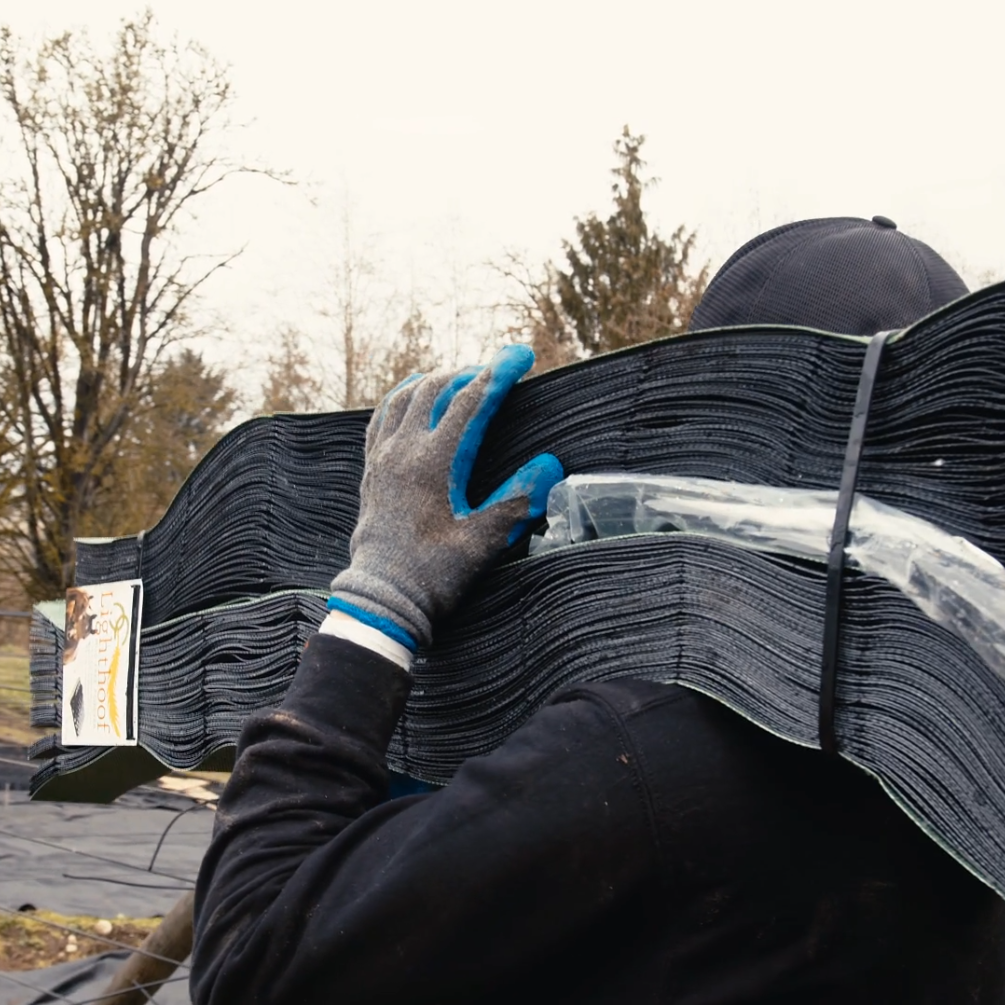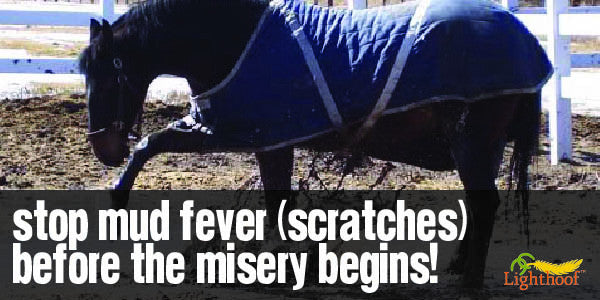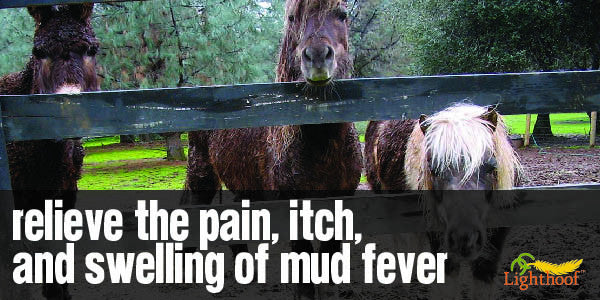 An annoyance for some and a nightmare for others, mud fever (also known as scratches or mud rash) is a painful bacterial skin infection on your horse’s lower legs. The tell-tale scabbing, irritation, oozing, and sometimes swelling is uncomfortable for your equine friend. The best strategy for fighting this nasty ailment is to prevent it! Once it settles in, it likes to stick around.
An annoyance for some and a nightmare for others, mud fever (also known as scratches or mud rash) is a painful bacterial skin infection on your horse’s lower legs. The tell-tale scabbing, irritation, oozing, and sometimes swelling is uncomfortable for your equine friend. The best strategy for fighting this nasty ailment is to prevent it! Once it settles in, it likes to stick around.
Dry is good
A number of different bacteria can cause mud fever and they all have one thing in common: they love moisture! Standing water and mud in your horse’s living area is an invitation for infection. If your horse has a muddy or puddly paddock, follow these tips for keeping his skin healthy:- Bring him inside (or restrict him in a covered shelter) in the evening to let him fully dry overnight. Rinse the mud off as he’s coming in and dry his legs with a towel to get a head start. An entire night of dry legs makes an unhappy environment for bacteria--just what you want!
- Before you turn him out, apply a protective balm to your horse’s dry legs. This prevents the water and bacteria from reaching his skin. Vaseline works well, as do other oil-based jellies and ointments. You can even use an antibacterial ointment or essential oils for extra measure.
- Use hot wire or temporary fencing to block off the wettest parts of your paddocks.
- Eliminate mud and puddles by installing Lighthoof panels. After all, the best way to prevent mud fever is to prevent mud!
- Put waterproof boots or socks on your horse for turnout. It’s important that they keep water out, not trap water in. Some manufacturers even make booties specifically to fight mud fever!
Fuzz is not your friend
Feathers or a shaggy winter coat can help create a perfect environment for bacteria on your horse. Clipping your horse’s legs as soon as the wet season begins can make a big difference in preventing mud fever. Keep them clipped short to help keep that wretched bacteria from settling in.
White legs are most vulnerable
It’s not fair, but pink skin is most likely to suffer bacterial infection. Fancy white socks make a horse especially vulnerable to mud fever. Vets aren’t sure why, but some propose it has to do with sunlight. If your horse has white on his legs, be extra careful about prevention and early detection.
Catch it early
The sooner you identify and begin treating your horse’s mud fever, the better your chances of beating it. In a moist environment, bacteria can run rampant in the delicate skin of your horse’s legs. These photos show moderate mud fever, before swelling and too much oozing occur:


Of course, if your horse’s legs are always caked with mud, you’re not going to notice his infection. Grooming dried, caked mud off of him or rinsing and drying wet, muddy legs is a critical daily task not just for prevention but for detection as well. As soon as you see even a single scab or bump, treat it! See our companion article, A Basic Equine Mud Fever Treatment Plan, for help getting rid of this condition.




Leave a comment
This site is protected by hCaptcha and the hCaptcha Privacy Policy and Terms of Service apply.